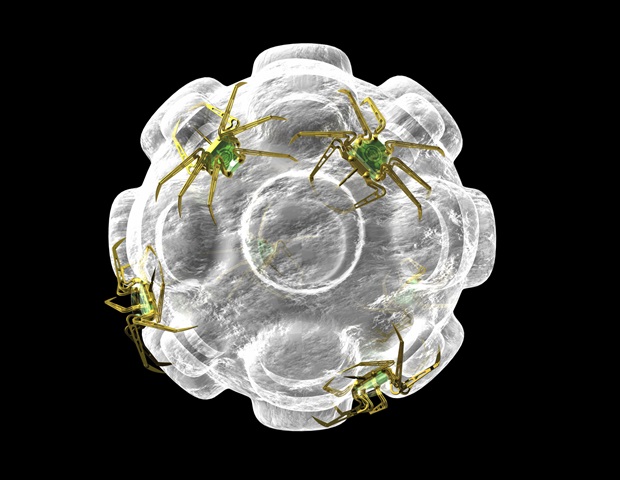A new tool could reduce costs for diagnosing infectious diseases.
Biomedical researchers from The University of Texas at Austin have developed a new, less expensive way to detect nuclease digestion – one of the critical steps in many nucleic acid sensing applications, such as those used to identify COVID-19 and other infectious diseases.
A new study published in the journal Nature Nanotechnology shows that this low-cost tool, called Subak, is effective at telling when nucleic acid cleavage occurs, which happens when an enzyme called nuclease breaks down nucleic acids, such as DNA or RNA, into smaller fragments.
The traditional way of identifying nuclease activity, Fluorescence Resonance Energy Transfer (FRET) probe, costs 62 times more to produce than the Subak reporter.
“To make diagnostics more accessible to the public, we have to reduce costs,” said Soonwoo Hong, a Ph.D. student in the lab of Tim Yeh, associate professor in the Cockrell School of Engineering’s Department of Biomedical Engineering, who led the work. “Any improvements in nucleic acid detection will strengthen our testing infrastructure and make it easier to widely detect diseases like COVID-19.”
The research team – which also included Jennifer Brodbelt, professor of chemistry at UT Austin’s College of Natural Sciences, and MinJun Kim, professor of mechanical engineering in Southern Methodist University’s Lyle School of Engineering – replaced the traditional FRET probe with Subak reporter in a test called DETECTR (DNA endonuclease-targeted CRISPR trans reporter).
Subak reporters are based on a special class of fluorescent nanomaterials known as silver nanoclusters. They are made up of 13 silver atoms wrapped inside a short DNA strand. This organic/inorganic composite nanomaterial is too small to be visible to the naked eye and ranging from 1 to 3 nanometers (one billionth of a meter) in size.
Nanomaterials at this length scale, such as semiconductor quantum dots, can be highly luminescent and exhibit different colors. Fluorescent nanomaterials have found applications in TV displays and biosensing, such as the Subak reporters.
We have very clear evidence from mass spectrometry that transformation from Ag13 to Ag10 underlines the green to red color conversion observed in the sample, after DNA template digestion.”
Jennifer Brodbelt, professor of chemistry at UT Austin’s College of Natural Sciences
Subak reporters, which can be synthesized at room temperature in a single-pot reaction, cost just $1 per nanomole to make. In contrast, FRET probe – which employs complex steps to label a donor dye and a quencher – costs $62 per nanomole to produce.
“These highly luminescent silver nanoclusters can be called quantum dots as they show strong size-tunable fluorescence emission due to quantum confinement effect,” Yeh said. “No one can precisely tune the cluster size (and the corresponding emission color) until our demonstration of Subak,” which highlights the innovation of this research.
In addition to further testing the Subak reporter for nuclease digestion, the team also wants to investigate whether it can be a probe for other biological targets.
The work is supported by a National Science Foundation grant to Yeh and Brodbelt.
Source:
Journal reference:
Hong, S., et al. (2024). A non-FRET DNA reporter that changes fluorescence colour upon nuclease digestion. Nature Nanotechnology. doi.org/10.1038/s41565-024-01612-6.


